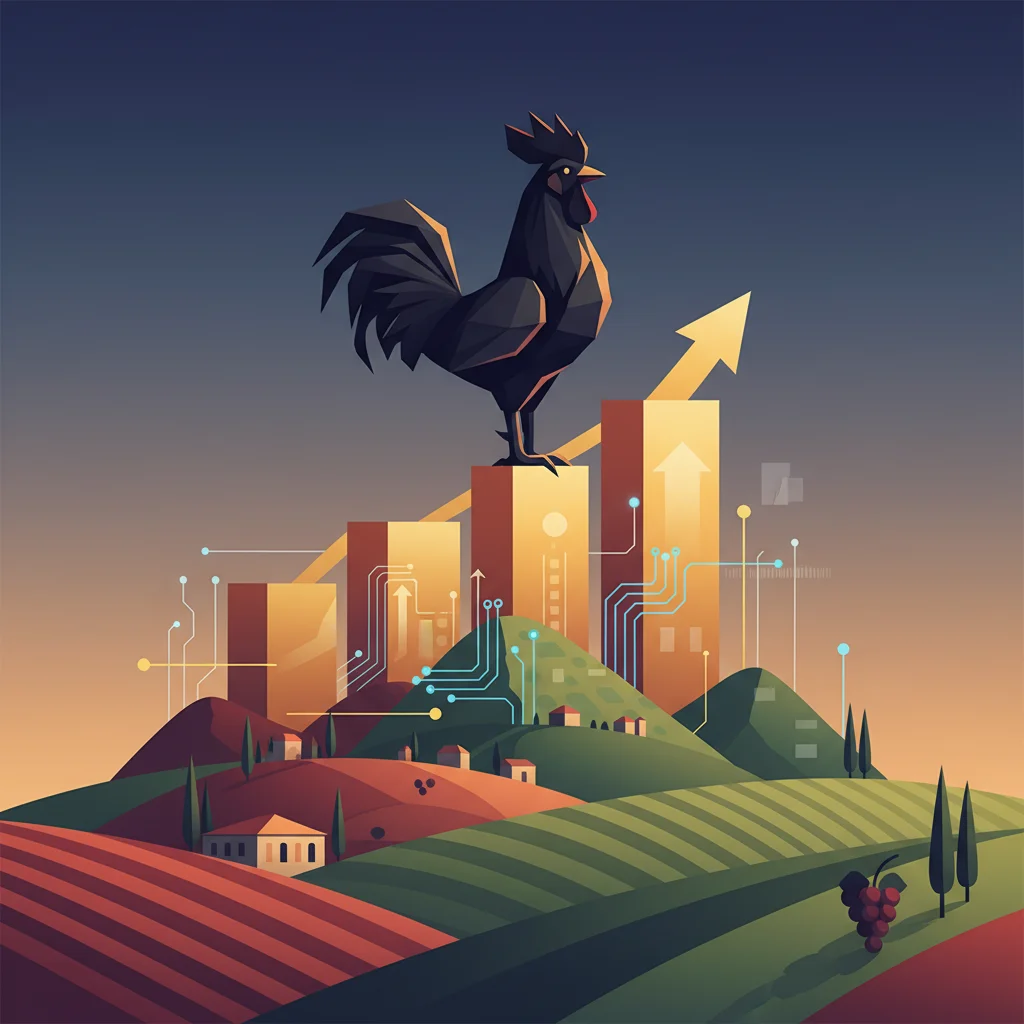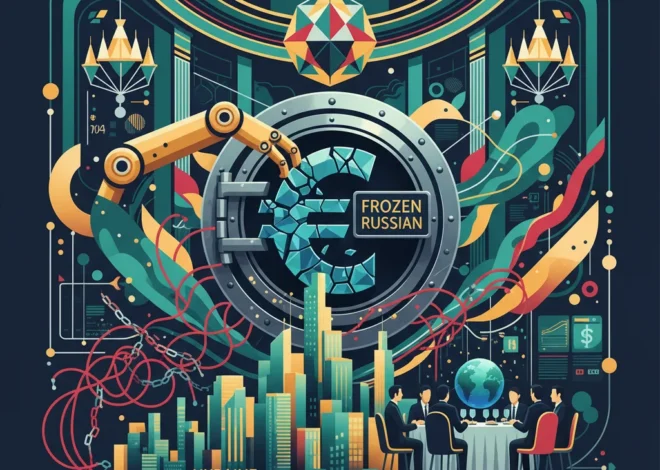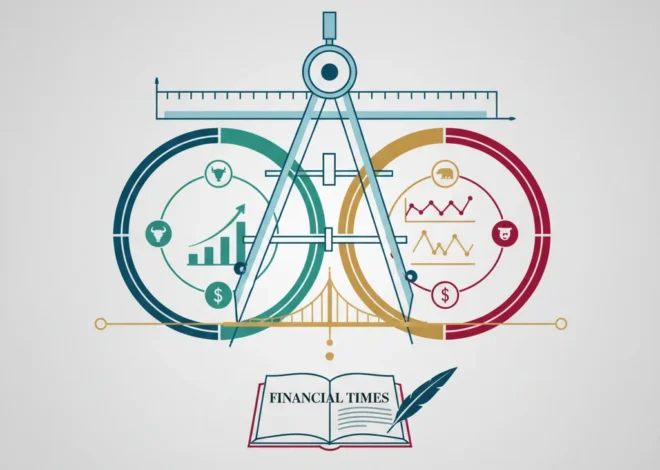
The Black Rooster’s Bull Market: Lessons in Value and Terroir from Chianti Classico for the Modern Investor
In the world of finance and investing, we are obsessed with fundamentals. We build complex models to identify a company’s economic moat, we scrutinize balance sheets for core strengths, and we celebrate transparent markets that allow for efficient price discovery. We seek assets with a unique, defensible value proposition. It might surprise you, then, to learn that one of the most compelling case studies in these principles isn’t found on the stock market, but in the rolling hills of Tuscany.
The Chianti Classico region, symbolized by its iconic “Gallo Nero” or black rooster, is undergoing a quiet revolution. This isn’t a revolution driven by disruptive financial technology, but by a profound return to its roots. By meticulously mapping and defining its unique micro-terroirs, the region is offering a masterclass in how to unlock and communicate intrinsic value. For business leaders, financiers, and investors, the lessons embedded in a bottle of Sangiovese are as potent and complex as any market analysis.
The “Terroir” Doctrine: Defining Your Ultimate Economic Moat
In viticulture, “terroir” is the holistic combination of soil, climate, topography, and human tradition that gives a wine its unique character. It is, in essence, an inimitable and non-replicable asset. An investor might look at this and see a perfect parallel to a company’s economic moat—that durable competitive advantage that protects long-term profits from competitors.
Just as Apple’s ecosystem or Coca-Cola’s brand are nearly impossible to duplicate, the specific expression of a Sangiovese grape grown in the Galestro soils of Radda is fundamentally different from one grown in the sandstone of Montefioralle. The Chianti Classico Consorzio (the region’s governing body) has leaned into this concept, moving away from a generic regional identity towards a celebration of hyper-local distinctiveness. They are, in effect, quantifying their moat.
This strategic shift involves a deep dive into the fundamentals. As the original article notes, the region’s signature grape, Sangiovese, produces “uniquely appetising expressions of the many terroirs” (source). This isn’t just about taste; it’s about a verifiable, geographically-bound asset class. For any business, the lesson is clear: true, sustainable value doesn’t come from chasing trends, but from identifying, cultivating, and clearly communicating your own unique “terroir.” What is the one thing your organization can do that no one else can, simply because of who you are and where you are?
Dubai's Shimmer vs. London's Substance: Why Buying the Dip on the UK is the Ultimate Power Play
UGA: A Low-Tech Blockchain for Proving Provenance?
The most significant innovation in this Tuscan renaissance is the introduction of the Unità Geografiche Aggiuntive (UGA), or Additional Geographic Units. This system divides the Chianti Classico zone into 11 distinct sub-regions, each with a recognized and legally defined terroir. This new classification, currently applied to the top-tier Gran Selezione wines, is a game-changer for transparency and value attribution.
From a financial perspective, the UGA system acts as a new layer of data and verification. It’s a kind of analog blockchain, providing an immutable record of a wine’s origin. In an era where ESG (Environmental, Social, and Governance) and provenance are paramount for investors, this system offers a new level of assurance. It combats the “generic asset” problem, allowing consumers and investors to move beyond the broad “Chianti Classico” label and invest in the specific characteristics of a village like Lamole or Vagliagli.
This is a masterstroke in market segmentation. It creates new, more focused asset classes within a larger portfolio. Think of it as moving from investing in a broad market index to selecting specific, high-performing sectors based on granular data. This is precisely the kind of innovation that fintech aims to bring to the financial world—using technology and data to create more transparent, efficient, and trustworthy markets.
Below is a look at some of the newly defined UGAs, each representing a unique “micro-market” within the Chianti Classico economy.
| UGA (Sub-Region) | Key Terroir Characteristic | Investment Analogy |
|---|---|---|
| San Casciano | Pebbly, alluvial soils; producing fuller-bodied wines. | Blue-Chip Stock: Reliable, robust, and well-structured. |
| Panzano | High-altitude vineyards with Galestro soil, known for elegance and acidity. | Growth Stock: High potential, elegant performance, built for the long term. |
| Radda in Chianti | High elevation, significant temperature shifts; creates aromatic, ageworthy wines. (source) | Venture Capital: Higher risk/reward, requires patience, potential for spectacular returns. |
| Castellina | A mix of clay, limestone, and sandstone; yielding balanced and complex wines. | Diversified ETF: A balanced portfolio of characteristics in a single asset. |
Building a Portfolio: From Annata to Gran Selezione
Chianti Classico offers a clear quality pyramid, which can be viewed as a framework for building a diversified portfolio with varying risk profiles. Understanding this structure is key to appreciating the region not just as a producer of wine, but as a structured market for tangible assets.
An investor’s journey into Chianti Classico mirrors the principles of portfolio construction in traditional trading and investing. You start with reliable, accessible assets and can gradually move into more complex, long-term holdings as your expertise and risk appetite grow.
Here’s how the tiers break down from an investment perspective:
| Wine Tier | Minimum Aging Requirement | Key Characteristics | Financial Parallel |
|---|---|---|---|
| Annata | 12 months | The entry-point; fresh, vibrant, and accessible. Represents the baseline health of the regional economy. | High-Grade Corporate Bond: Lower risk, reliable return, high liquidity. The bedrock of a portfolio. |
| Riserva | 24 months (incl. 3 in bottle) | More structure, complexity, and aging potential. A more serious commitment. | Blue-Chip Equity Index Fund: Proven long-term performance, moderate risk, a core holding for growth. |
| Gran Selezione | 30 months (incl. 3 in bottle) (source) | The pinnacle; sourced from a single estate, representing the best expression of a specific terroir. Now includes UGA designation. | Private Equity/Angel Investing: Illiquid, high barrier to entry, requires deep expertise, but offers the highest potential for appreciation. |
This tiered system provides multiple entry points for investors and consumers, creating a stable and layered market. The introduction of the UGA label to the Gran Selezione tier adds another layer of specificity, allowing for targeted investments in top-performing “assets” with proven provenance.
The AI Revolution in Your Shopping Cart: A New Era for Retail, Investing, and the Economy
The Final Analysis: A Toast to Timeless Principles
The evolution of Chianti Classico is more than an agricultural story; it’s a profound business and economic case study. It demonstrates that in a globalized, often commoditized world, the ultimate value lies in authenticity, specialization, and a deep connection to one’s fundamental strengths. The discipline of the region’s Consorzio mirrors the regulatory oversight needed in any healthy market, ensuring quality and trust.
For the modern investor, the lessons are invaluable. First, seek out assets and companies with a genuine, defensible “terroir.” Second, champion and invest in systems that promote transparency and verifiable data, whether they are powered by blockchain or by centuries of tradition. Finally, understand that a well-structured portfolio, much like a cellar, should have a mix of accessible assets for immediate enjoyment and complex, long-term holdings that appreciate with time.
The next time you analyze a company’s position in the stock market or evaluate a new piece of financial technology, perhaps think of the black rooster. Ask yourself: what is its terroir? How is its value being defined and communicated? The answers may just determine whether you’ve found a fleeting trend or a true Gran Selezione investment.
The Great Thaw: Why Europe's IPO Market is Roaring Back to Life in 2024


